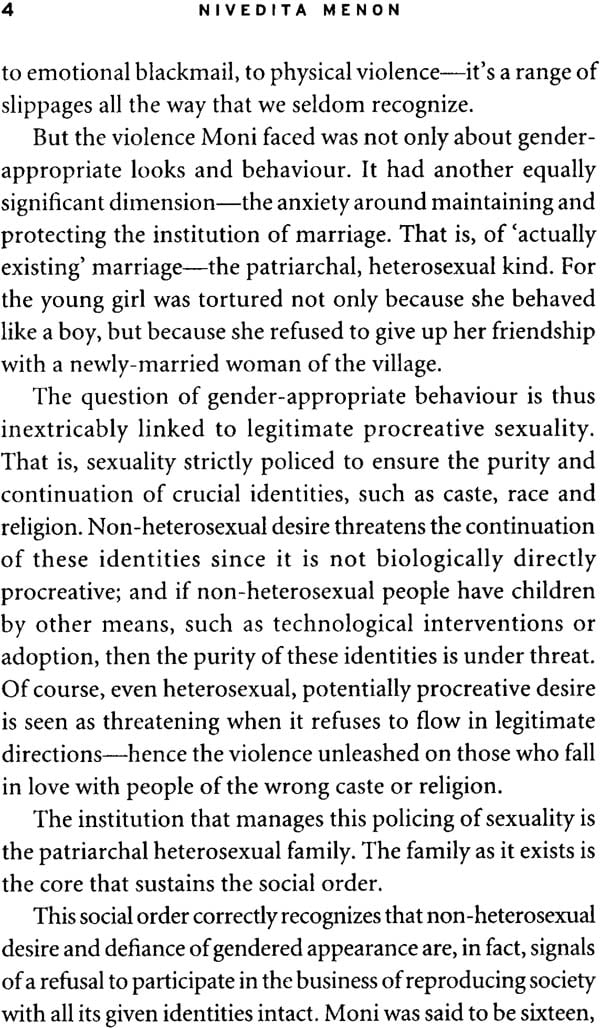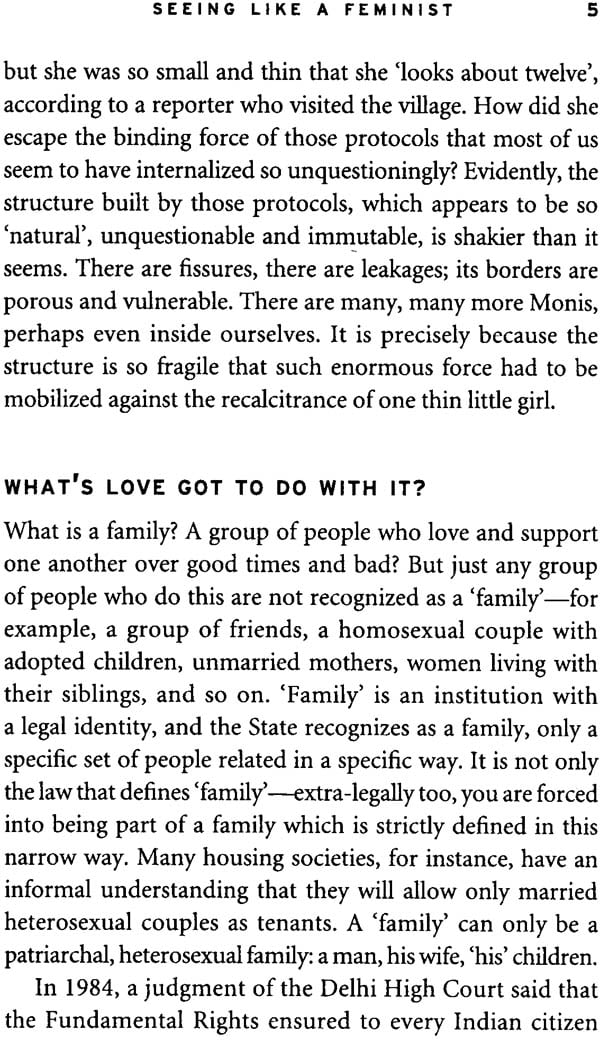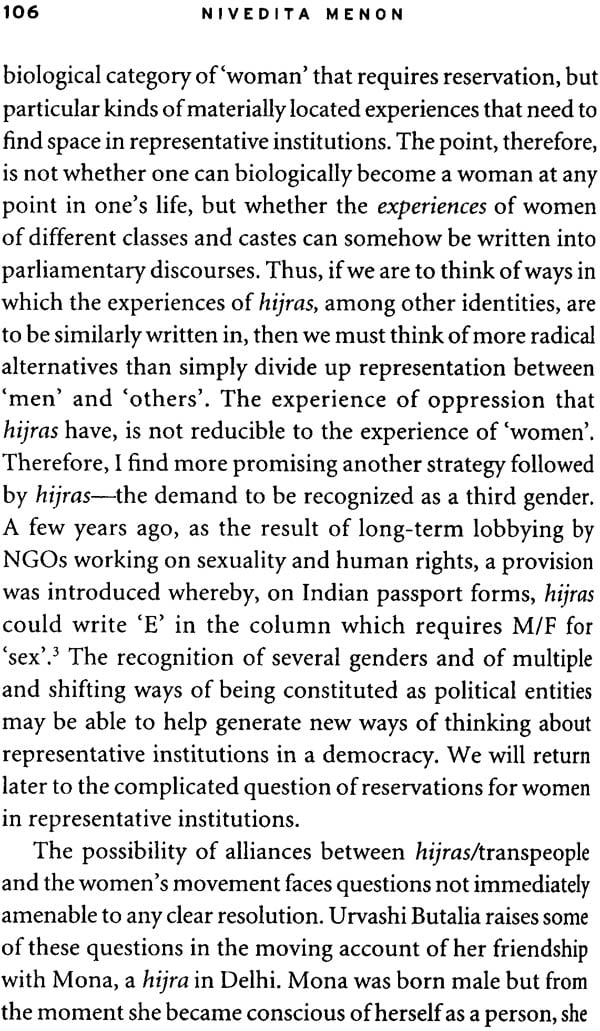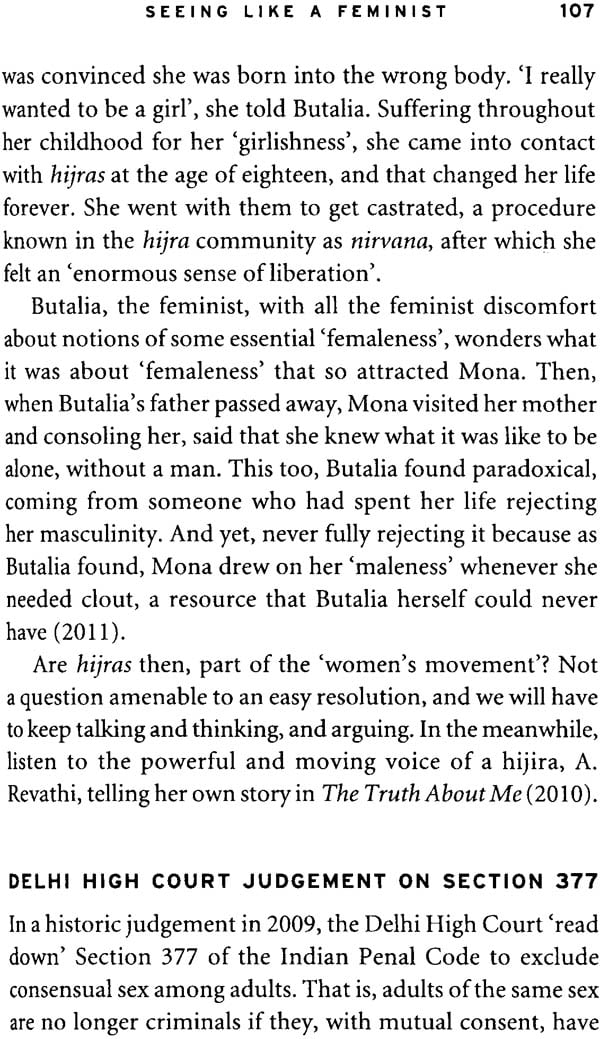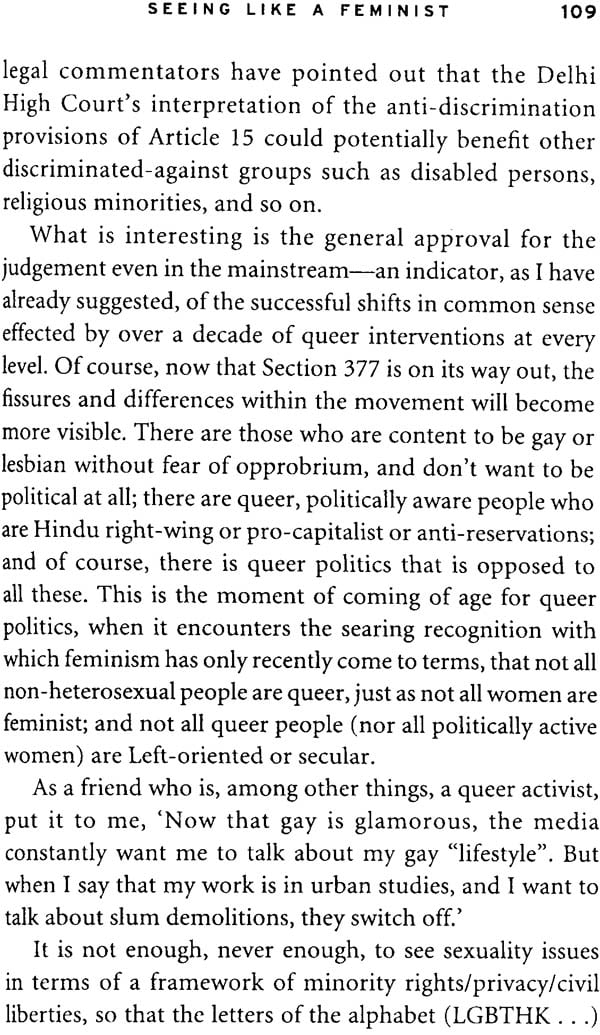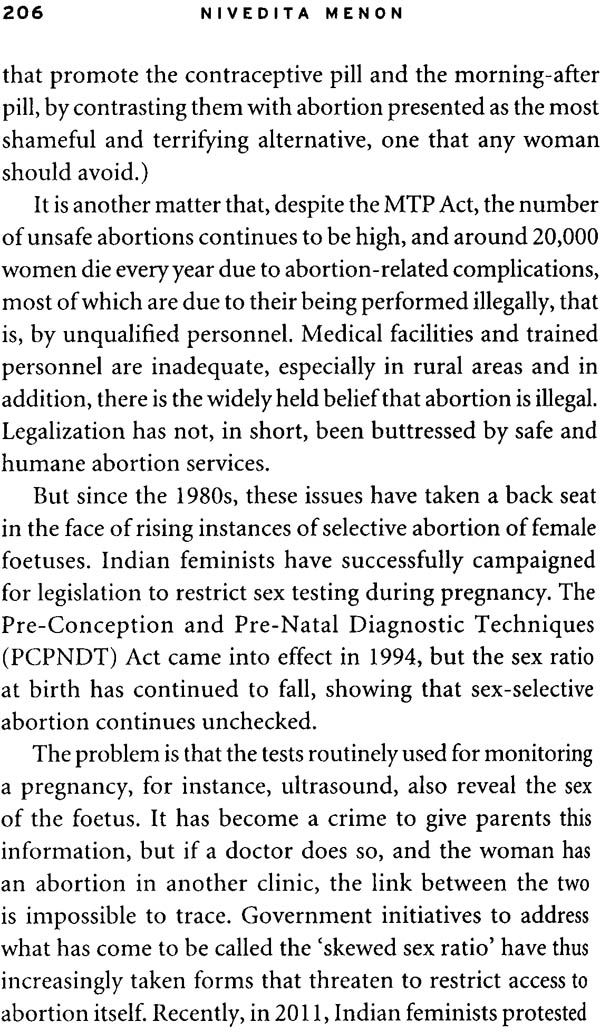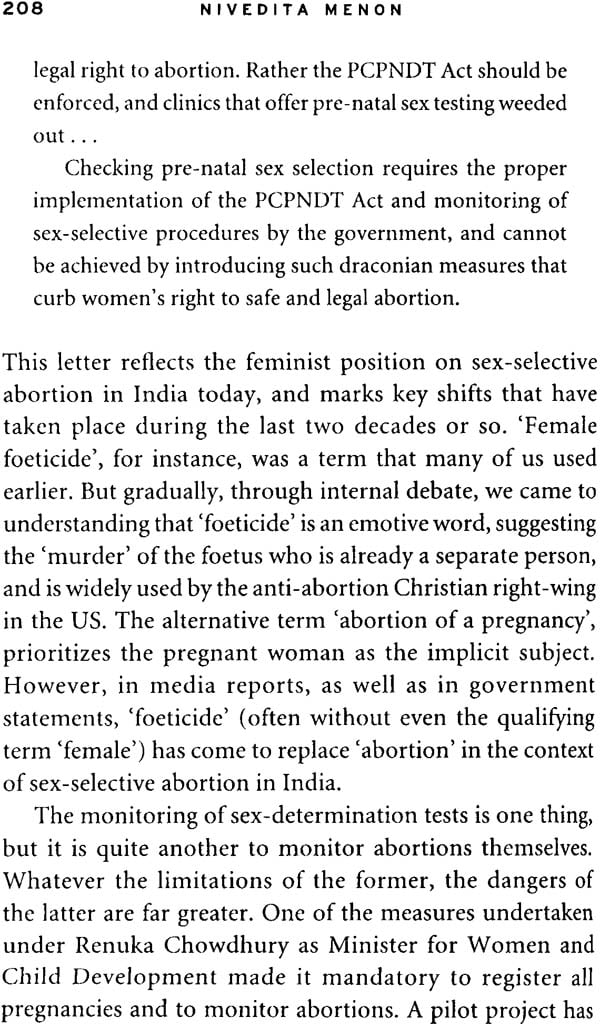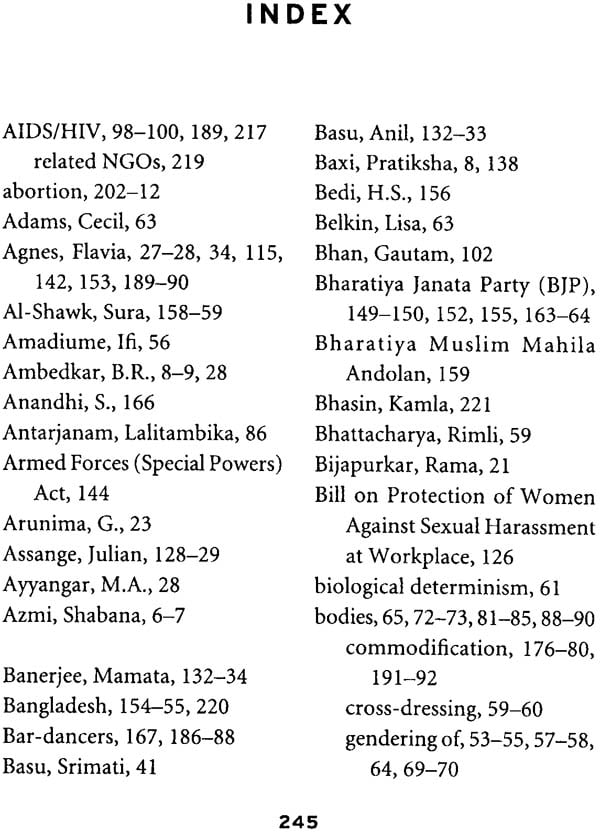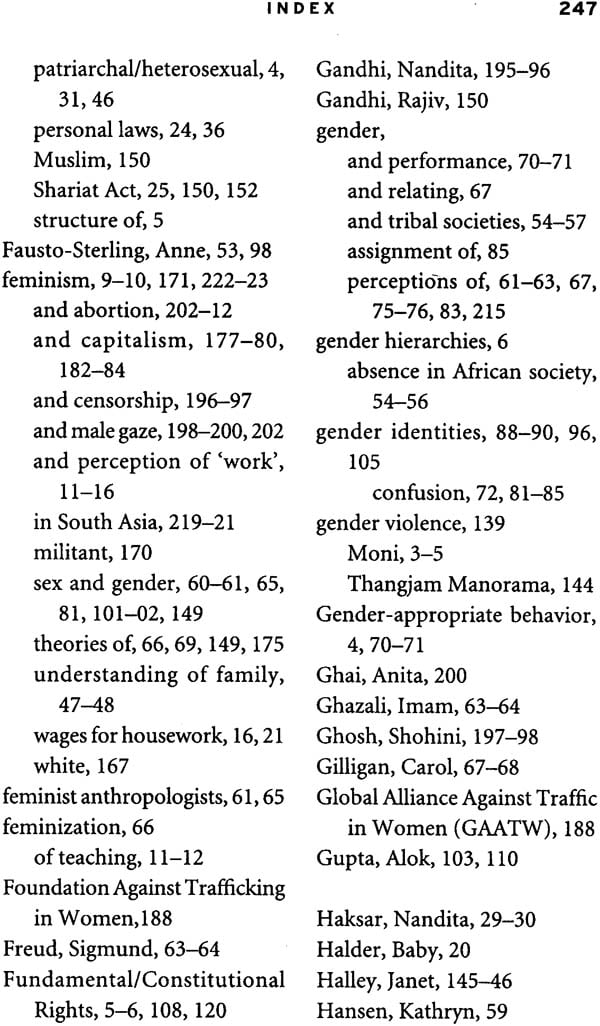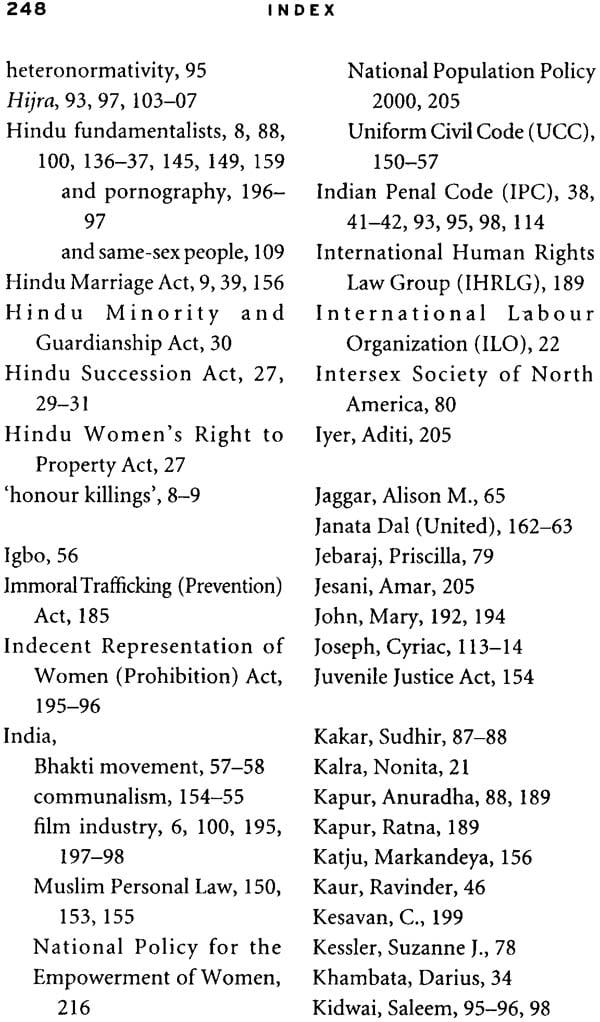
Seeing Like a Feminist
Book Specification
| Item Code: | NAH475 |
| Author: | Nivedita Menon |
| Publisher: | Penguin Books India Pvt. Ltd. |
| Language: | English |
| Edition: | 2012 |
| ISBN: | 9780143067429 |
| Pages: | 264 |
| Cover: | Paperback |
| Other Details | 8.0 inch x 5.0 inch |
| Weight | 220 gm |
Book Description
For Nivedita Menon, feminism is not about a moment of final triumph over patriarchy but about the gradual transformation of the social field so decisively that old markers shift forever.
From sexual harassment charges against international figures to the challenge that caste politics poses to feminism, from the ban on the veil in France to the attempt to impose skirts on international women badminton players, from queer politics to domestic servants' unions to the Pink Chaddi campaign, Menon deftly illustrates how feminism complicates the field irrevocably.
Nivedita Menon teaches Political Thought at Jawaharlal Nehru University, Delhi. Her previous books include Recovering Subversion: Feminist Politics Beyond the Law (2004); an edited volume, Sexualities (2007); and Power and Contestation: India after 1989 (2007, co-authored with Aditya Nigam). An active commentator on the blog kafila.org, she has also translated fiction and non-fiction from Hindi and Malayalam into English. She has been active with citizens' forums in Delhi on secularism, workers' and women's rights, sexuality, and in opposition to the nuclear bomb.
Have you heard of 'nude make-up'?
This is what it is:
'Nude make-up looks are all about your skin looking fresh and dewy, without looking like you're even wearing any make-up. All you need is eyeliner, mascara, nude lipstick, and a highlighting blush that will give your skin a natural- looking glow.'!
The whole point of nude make-up, clearly, is to spend hours painting your face in order to make it look like you had not touched it at all.
The maintaining of social order is rather like that. It requires the faithful performance of prescribed rituals over and over again throughout one's lifetime. Complex networks of cultural reproduction are dedicated to this sole purpose. But the ultimate goal of all this unceasing activity is to produce the effect of untouched naturalness.
When one 'sees' the world like a feminist though, with the gaze of a feminist, it's rather like activating the 'Reveal Formatting' function in Microsoft Word. It reveals the strenuous, complex formatting that goes on below the surface of what looked smooth and complete.
What do I mean by feminism? A feminist perspective recognizes that the hierarchical organizing of the world around gender is key to maintaining social order; that to live lives marked 'male' and 'female' is to live different realities. But simultaneously, to be a feminist is to imagine occupying the marginal, relatively powerless position with reference to every dominant framework that swallows up the space at the centre. For instance, any possible female reader of this book would be in a relatively powerful position with regard to the working-class men she interacts with daily-the auto rickshaw driver, the janitor, the domestic servant; and if she is an upper-caste Hindu in India, or a white American anywhere, with regard to men who are not. At the same time, she would experience her relative powerlessness as a woman if faced by a man in a position to attack her sexually, regardless of his class or caste; or when she compares her life choices and autonomy with those of a man of her class. Needless to say, it is not only 'women' who can adopt feminism as a political stance and way of life, but men who choose to do this have to take a stand against the privileges that they could otherwise take for granted.
Feminism is thus not about individual men and women, but about understanding the ways in which 'men' and 'women' are produced and inserted into patriarchies that differ according to time and place. My title is inspired by lames Scott's Seeing like a State, but there is a crucial difference in the way 'seeing' operates in the two instances. Scott uses the metaphor of seeing to indicate the ways in which a modern state makes heterogeneous practices legible to itself in order to control them. Thus, the State's 'seeing' is invested with enormous power, because when it 'sees' an identity, it is making that identity 'real', its 'seeing' is simultaneously ordering society. On the contrary, when a feminist 'sees' from the position of marginality he or she has deliberately chosen to occupy, it is a gesture of subversion towards power; it disorganizes and disorders the settled field, resists homogenization, and opens up multiple possibilities rather than close them off.
To be a feminist is to understand that different identities located hierarchically as dominant or subordinate-are produced at different times and in different spaces, but also to be aware particularly of the processes of gendering. By 'gendering', I mean the ways in which people are produced as 'proper' men and women through rules and regulations of different sorts; some of which we internalize, some which have to be violently enforced. To be a feminist is to recognize that, apart from gender-based injustice, there are multiple structural inequalities that underlie the social order, and to believe that change is possible, and to work for it at whichever level possible. Feminism is not an organization that one formally joins, and it can never be the isolated achievement of individual women. To be a feminist is to feel part of the history that has produced us; it is to insert oneself into two centuries of thick, textured narratives of struggles and celebrations that transcend national boundaries; to hear the strains of songs of anger and sorrow and militancy in many tongues; to remember our heroines, our foremothers; and, above all, to feel an enormous sense of continuing responsibility.
| Introduction | vii |
| Family | 1 |
| Body | 51 |
| Desire | 91 |
| Sexual Violence | 111 |
| Feminists and 'Women' | 147 |
| Victims or Agents? | 173 |
| Conclusion | 213 |
| Notes | 225 |
| Bibliography | 231 |
| Acknowledgements | 243 |
| Index | 245 |

